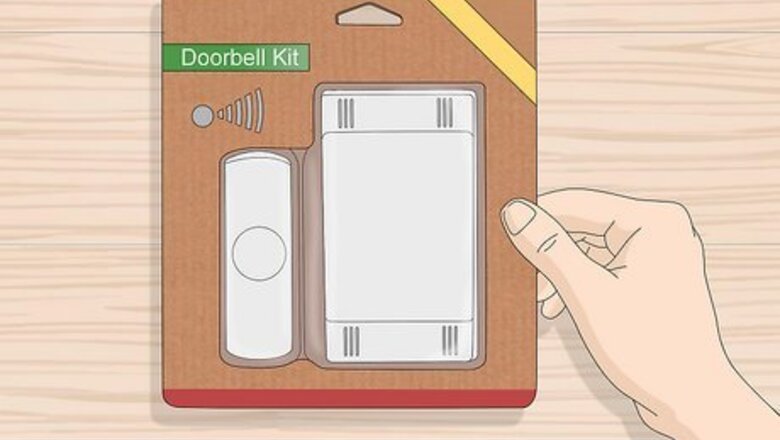
views
Removing the Chime Cover

Buy a new doorbell chime. You should be able to find one at your local hardware store, or at any home supply store. Doorbell chime boxes are rectangle-shaped boxes, roughly 6 inches by 4 inches (15 cm by 10 cm). The specific chime sound of each doorbell—e.g. a traditional “ding dong” or a novelty ring—should be marked clearly on the box. Ask the sales staff for help if you like; they’ll be able to recommend which doorbell brand they prefer.

Shut off power to the circuit that the doorbell is wired to. You’ll need to find the circuit breaker box in your house or apartment. Breaker boxes are often located in the pantry or kitchen (in apartments) or in the basement or garage (in houses). Then, find the specific labeled breaker that controls power to the room that your doorbell chime box is located in. Doorbell chime boxes are usually located in well-trafficked areas of a house. The chime will be located on the wall, typically in the living room. Also check in the dining room or front hallway if you’re unsure of the box’s location. For example, if the chime box is located in the living room, you’ll flip “off” the breaker labeled “Living Room.”

Remove the cover from the chime. To remove the cover, simply lift up from the bottom. The chime-box cover will lift upwards, and you can then lift the top part of the box away from the metal chime unit. Set the cover somewhere nearby, like on the living room sofa or a chair.
Removing the Wires and Screws

Loosen the screw holding the “Front” wire in place. Once you’ve removed the plastic chime cover, you’ll see a small panel with two (or three) screws on it, each pinning down a lead wire. The screws will be labeled “Front,” (for the front doorbell), “Trans” (connected to the transformer), and “Rear” or “Back,” if your house has a doorbell at the back door. Use a screwdriver to first loosen the screw labeled “Front.” These screws could either be regular or Phillips head. You’ll have to inspect your specific chime box to find out which type of screwdriver you need to loosen the screws.
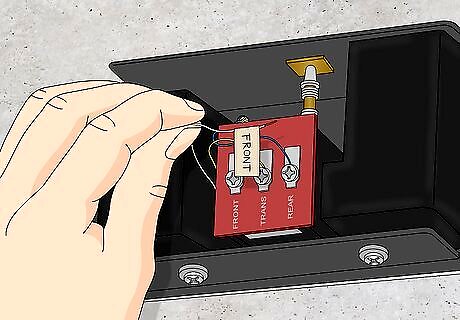
Label and remove the front lead wire. After you’ve loosened the “Front” screw, unhook the piece of wire from behind it. To avoid confusion, make a note which screw terminal it is connected to. Take a small piece of masking tape, and write the word “Front” on the strip, and then fasten the tape around the lead wire. Alternately, if the “Front,” “Trans,” and “Rear” wires are all different colors, you could remember which is which by jotting down which color was attached to which screw. For example, write: “Trans = white wire,” “Front = red white,” “Back = black wire,” or whatever colors your specific wires may be.
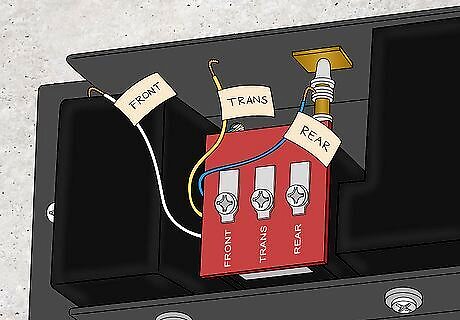
Repeat with the other wire(s). After you’ve removed the lead wire connecting to the “Front” screw and labeled the wire accordingly, repeat the process with the “Trans” and “Back” or “Rear” screws. Loosen the screw and remove the wires, then use a piece of masking tape (or a note on paper) to label the wire “Trans” or “Rear.” Not all doorbells have a bell at both the front and back doors. If yours doesn’t have a “Back” wire and screw, just remove and label the “Trans” wire.

Remove the chime from the wall. Now that you’ve disconnected and labeled the wires, you can use the same screwdriver to remove the two screws that are holding the metal chime plate to the wall. Pull the chime gently away from the wall, taking care to thread the loose wires out through the back of the chime. Set the screws in the back of the plastic chime box that you removed earlier. This way, you’ll know where they are. Avoid jerking on the wires or pulling on the chime too quickly, as this could damage or disconnect the wires inside the wall.

Tape the wires to the wall. Once you’ve removed the chime box from the wall, the two (or three) wires could easily slip back behind your drywall. To prevent this, use a piece of masking tape to secure all three wires to the wall. Tape them down securely, about 4 inches (10 cm) from the edge of the hole that the chime box came out of. If the wires do slip behind your wall, they’ll be very difficult to extract.
Installing the New Chime
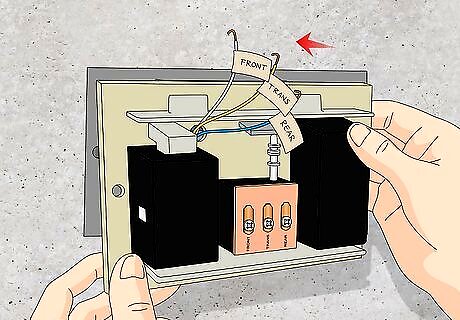
Thread the wires through the back of the new chime. The new doorbell chime should be structured the same as the chime that you just removed. Remove the wires that you’ve taped to your wall, and feed them through the open hole in the chime that you’re installing. Until the wires are firmly secured under their respective screws, you’ll need to keep a finger or two on them so they don’t slip behind the wall.
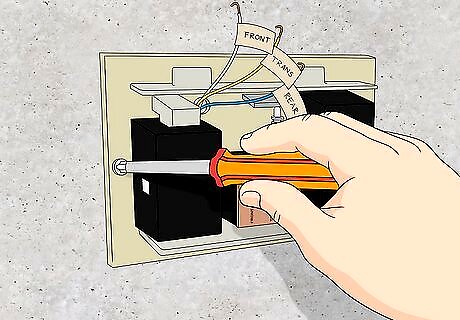
Mount the new chime to the wall with screws. Pick up the screws from where you set them earlier, and re-attach the new chime to the wall.

Connect the wire labeled “Front.” Similarly to the old doorbell chime, the new chime should have a screw terminal labeled “Front.” Loop the exposed copper portion of the wire labeled “Front” over the corresponding screw and give it a full clockwise twist around the screw. Once the exposed copper wire is wrapped around the screw, tighten the screw until the wire is held firmly in place. Then remove the piece of tape from around the wire. Do not wrap the insulation-covered portion of the wire around the screw.

Repeat with the wire(s) labeled “Back” and “Trans.” Once the “Front” wire is connected, follow the same procedure to reconnect the other wire(s) to their respectively labeled screws. Tighten each screw so that the exposed copper portion of the wire is held in place, but not to the point that it’s being crushed. After connecting the wires to their respective screws, remember to remove the masking tape that you attached earlier.
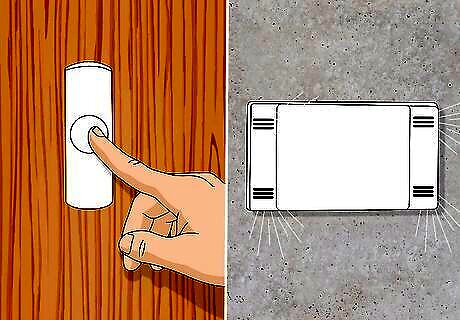
Turn the breaker back on and test-ring the doorbell. You’ll need to return to the circuit breaker box, and flip the “Living Room” breaker back to the “On” position. Then walk to your front door (and back door, if applicable) and press the doorbell. If the bell(s) sound, you’ve installed the chime correctly. If the doorbell doesn’t work, check to make sure that the power is back on in the rest of the living room (or whichever room the chime box is located in). Then, make sure that the wires each only touch a single screw, and are firmly connected around the screws’ bases. Test the conductivity of the wires by either using a battery tester or meter reader, to ensure that everything is conducive all the way through before placing the plastic cover over the chime. If the doorbell works properly, you can place the plastic cover back over the chime.




















Comments
0 comment